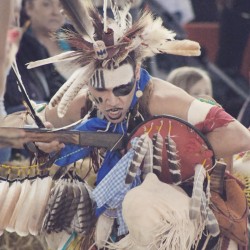Ardena Garth Hicks was the first African American female public defender in Tennessee’s Hamilton County. When the State of Tennessee created the office of public defenders 18 years ago, it was an appointed position by the Governor. Ardena was the only applicant with both defense and prosecutorial experience. Of the 27 initially appointed public defenders, only two were black females.
Category Archives: Race & Ethnicity
Racial and ethnic cultural differences
Race Relations and the Confederate Flag – by Deborah Levine
Morris Dees, Founder of the Southern Poverty Law Center (SPLC), was the featured speaker at the Jewish Federation of Greater Chattanooga annual First Amendment dinner. Mr. Dees was introduced by Chattanooga Mayor Andy Berke. Mayor Berke, a member of Chattanooga’s Jewish community was comfortable in the Federation setting and shared that he was not wearing a tie due to the well-known perils of ketchup. Picking up on the informality, Dees removed his own tie and listened, along with a packed house, to the mayor’s remarks.
Continue reading Race Relations and the Confederate Flag – by Deborah Levine
How Pow Wow Leaders Inspired – by Deborah Levine
 When regional Native Americans convene in Chattanooga’s First Tennessee Pavilion, you’ll find me there, too. This year, the gathering seemed larger and more energetic than ever. I come to admire the colorful dress, hear the drum circle, and watch the dancing. The booths full of Native American arts and crafts are irresistible and my drawers are full of jewelry purchased there. I also come for the honor guard, a promenade of Native American veterans, police, firemen, and war mothers.
When regional Native Americans convene in Chattanooga’s First Tennessee Pavilion, you’ll find me there, too. This year, the gathering seemed larger and more energetic than ever. I come to admire the colorful dress, hear the drum circle, and watch the dancing. The booths full of Native American arts and crafts are irresistible and my drawers are full of jewelry purchased there. I also come for the honor guard, a promenade of Native American veterans, police, firemen, and war mothers.
Continue reading How Pow Wow Leaders Inspired – by Deborah Levine
LIFE APPlications: Owning your Legacy – by Lakweshia Ewing
I am Lakweshia Ewing, a co-owner of Biz Boom Apps, LLC. I was born in Memphis into a life of poverty and all of the negative symptoms that it can bring along with it. It was always a dream to become a game-changing businesswoman and philanthropist so this early curiosity and an already successful family member willing to educate me on how to change the world through technology I dove in head first into the realm of technology known as the “Mobile Market” as a co-owner of Biz Boom Apps, LLC. It was the desire of Biz Boom Apps to provide the small business world with a mobile solution that is a one-stop-shop for all of its marketing and communication needs.
Continue reading LIFE APPlications: Owning your Legacy – by Lakweshia Ewing
Do you laugh at stereotypes? – By Julia Wai-Yin So, PhD
Do you recall the last time you heard a casual remark about the stereotype of one particular racial/ethnic group? These are not blatant racist jokes, but stereotypical comments such as:
“White men can’t jump.”
“Latinos are lazy.”
“Blacks are better runners.”
“Natives are drunks.”
“Asians can’t drive.”
Continue reading Do you laugh at stereotypes? – By Julia Wai-Yin So, PhD
Honoring Native American Art in the Southeast – by Deborah Levine
There is much beauty to celebrate in Native American art, but that it’s a struggle to create given the devastating historical events surrounding Native Americans. The Cherokee Nation had a culture that thrived for almost 1,000 years in the Southeastern United States: in Georgia, Tennessee, North and South Carolina, and parts of Kentucky and Alabama. Life of the traditional Cherokee changed drastically with European expansion and cession of Cherokee lands to the colonies in exchange for trade goods. Migration from the original Cherokee Nation began in the early 1800s as Cherokees wary of white encroachment moved west and settled in other areas of the country’s vast frontier. Their eventual removal by force prompts the question of whether there is any Cherokee cultural presence remaining in the Southeast.
Continue reading Honoring Native American Art in the Southeast – by Deborah Levine
Inner City Students Need a Chance to Be Brilliant – by Martin Davis
Young people in the inner city public school system face peer pressure daily, pressure just for speaking proper English, asking questions in class, turning in homework, carrying books to and from school, and studying for tests. When I heard African American students talk about these challenges, I knew right then and there that something had to change in our schools. That’s why I created the Be Brilliant project. A change in our children’s mindset was in order.
Continue reading Inner City Students Need a Chance to Be Brilliant – by Martin Davis
Working with Black Men in Corporations – by Terry Howard
I often get requests to address particular topics in columns and workshops, some clearly diversity-related, others not. Here are examples: “What’s it like being black in corporate America?” “Why women don’t brag – and why they should,” “Dreadlocks, long braids, weaves and wigs in corporate America,” “How to talk to a transgender person,” “How to recover from rejection at work,” and “Strategies for promoting your professional brand.” And there are others.
Continue reading Working with Black Men in Corporations – by Terry Howard
Imagine All the People – By Yvor Stoakley
Close your eyes. Imagine that you are the average white American in the early 21st Century. You can visualize yourself as president of your country (or country club). You can see yourself as the object of widespread adulation for winning an Oscar or Olympic gold. You have no difficulty picturing yourself as a graduate of Stanford or Harvard or Duke, as an inventor, as a diplomat or a thousand and one other achievements. But when you focus your mind on your fellow Americans of African or Asian or Native or Latin heritage, what do you imagine then? What images spring to mind?
The road less traveled –by Terry Howard
The three panelists were “women of color”; a Mexico-born Latina, a U.S. –born African-American and one reared in Africa, all highly regarded electrical engineers. In skin color, they ranged from “very light” (the Latina) to “light/medium brown” (one black woman) to “very, very dark” (the other black woman), the former two with shoulder length flowing black hair.
The audience consisted of thirty managers and I was the facilitator.

